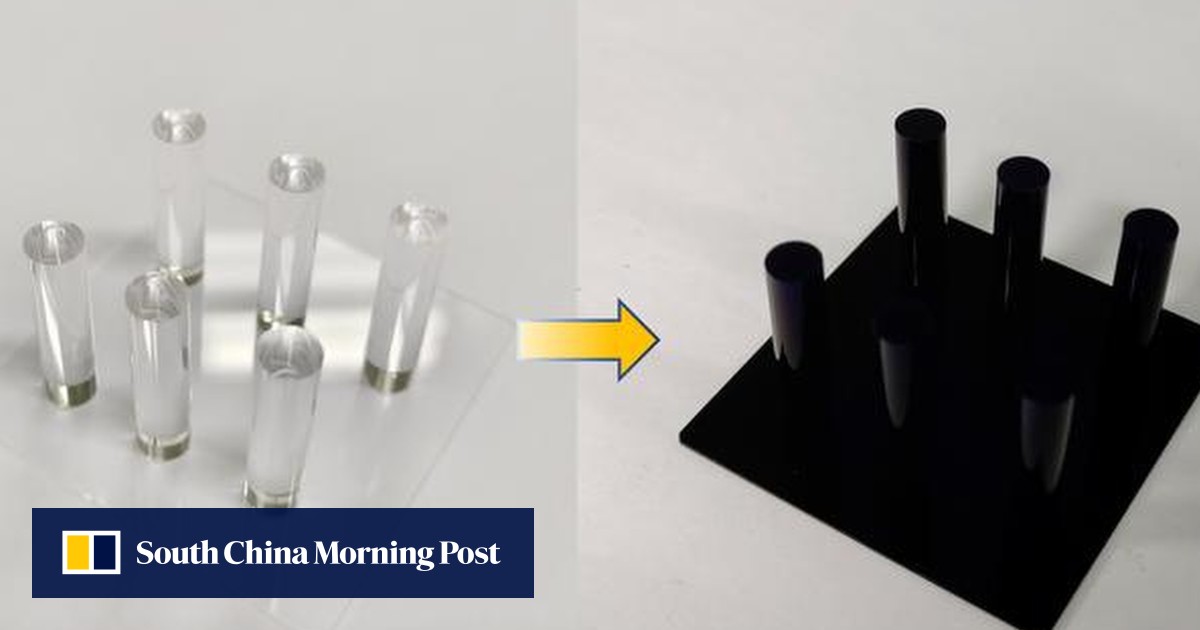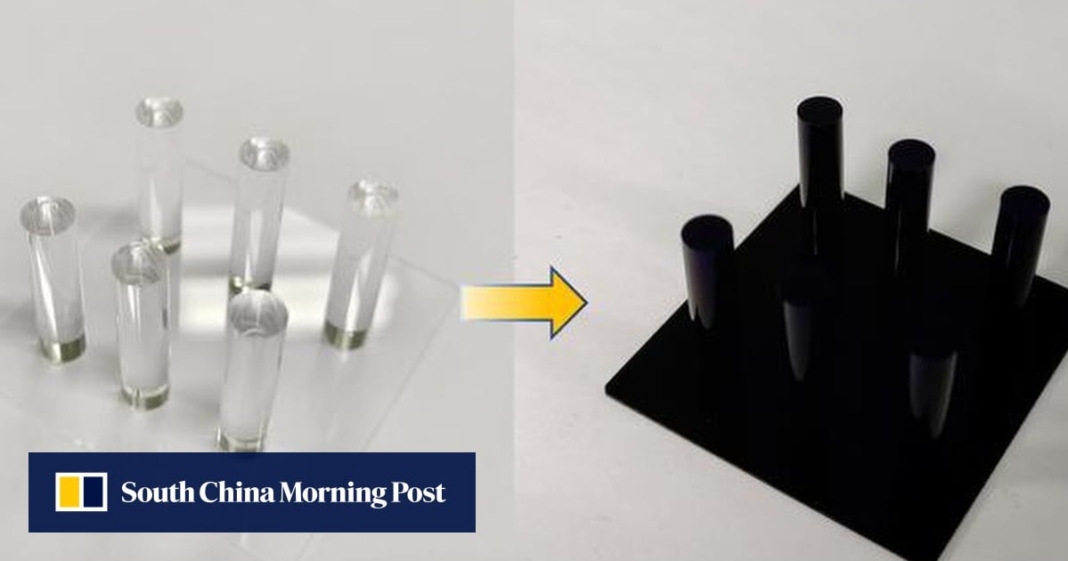
A team of scientists in Shanghai have developed an ultra-black coating that they say can improve the image quality of cameras and space telescopes.
The material can absorb most of the unwanted scattered light that can enter a camera lens and create veiling glare or unintended bright spots in photos, according to the team from the Chinese Academy of Sciences’ Shanghai Institute of Ceramics.
They said the thin film could absorb 99.3 per cent of light across a wide range of wavelengths – from violet light at 400 nanometres to near-infrared at 1,000nm.
Hong Kong team says new cool white ceramic may cut air-conditioning costs
Hong Kong team says new cool white ceramic may cut air-conditioning costs
The light spectrum visible to the human eye ranges from 400nm to red light at 780nm.
“The film is promising for application in precision optics under harsh environmental conditions,” the researchers wrote in an article published in the peer-reviewed Journal of Vacuum Science & Technology A last week.
“This robust ultra-black film … provides an effective solution for achieving broadband absorption properties on large curvature or irregular surfaces, which is promising in various applications such as astronomical observation and precision optics engineering.”
To create the extremely dark film, the team used alternating layers of titanium-aluminium-carbon composite – a black-coloured material that absorbs light – and silicon dioxide, which serves as an anti-reflection layer.
They said the two materials worked in tandem to trap light and stop nearly all of it from reflecting off a coated surface.
Study author Lu Lin, an associate professor at the institute’s Key Laboratory of Inorganic Coating Materials, said there could be wide applications in precise optics for the new material.
“Stray lights often interfere with the light we actually need, resulting in a blurry photo. After we apply the film onto areas of the cameras where stray light could be present, it will be absorbed and stop reflecting,” she said. “This way, image quality will be improved.”
Is China feeling the pressure? A look into ‘unprecedented’ science, tech drive
Is China feeling the pressure? A look into ‘unprecedented’ science, tech drive
Lu said the material was highly durable and able to withstand friction from sandpaper and erasers, as well as repeated tests under extreme temperature changes – from minus 100 degrees Celsius to 100 degrees, and in hot, humid environments.
She added that the material could be adjusted to absorb light from different wavelengths depending on the needs of the application.
Source: scmp.com



